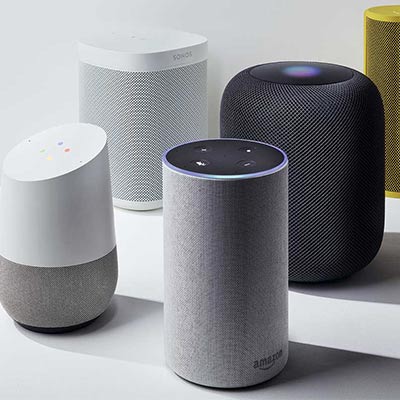Smart speakers like Alexa Echo, Google Home, or Home Pod are designed to make our lives easier. They allow us to shop online, listen to the news, find out what the weather is going to be like, make calls or send emails; among other things.
However, we are only realising about 20% of the potential of these devices. “How can I get the most out of my smart speaker, you ask? Read on and we’ll tell you why home automation is the big secret to really making your life easier and how to get the most out of these smart speakers.
In order to start unveiling how to ‘squeeze’ the functionalities of these trendy devices, let’s lay the groundwork first:
What is a smart speaker?
A smart speaker is a voice-controlled device that includes a virtual assistant and works through artificial intelligence (AI) and machine learning algorithms. Its configuration allows you to interact with it and make requests. In addition, in order to provide personalised responses, the smart speaker is programmed to continuously learn about your tastes, hobbies, interests, routines, etc.
Smart speakers arrived on the Spanish market in 2018. As of today, the three brands preferred by Spanish consumers correspond to the three big technological giants: Google Home (from Google), Alexa (from Amazon) and Home Pod (from Apple).
What are the most popular smart speaker brands in Spain (2019)?
Prices and models of smart speakers on the Spanish market today
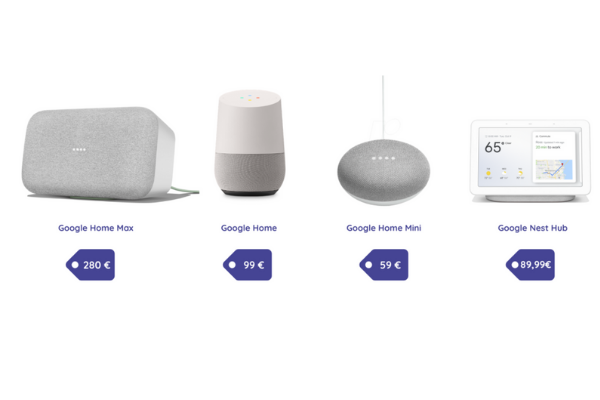
Within each brand, there are different models of smart speakers. Let’s see what they are:
Google currently has four models of smart speakers: Google Home Mini, Google Nest Hub, Google Home and Google Home Max.
Smart speakers from Amazon
Amazon currently has six models of smart speakers that are just as in demand as the rest: Amazon Echo Dot 3rd generation, Amazon Echo Dot 4th generation, Amazon Echo Show, Amazon Echo Plus, Amazon Echo Studio and Amazon Echo Spot.
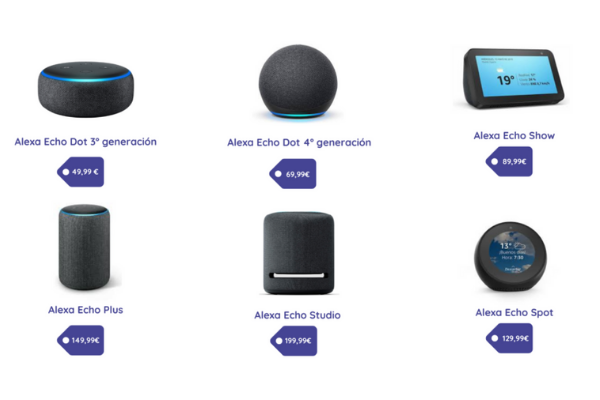
Smart speakers from Apple
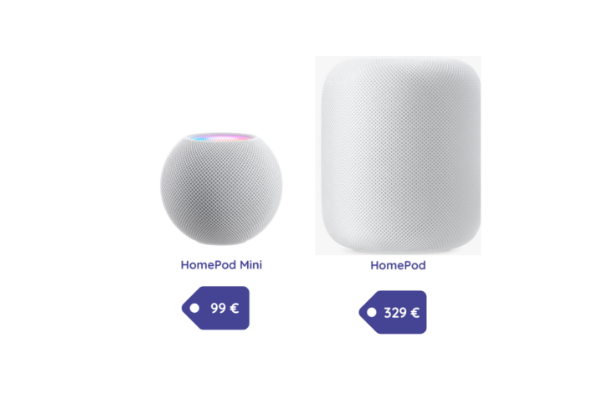
Apple currently has two models of smart speakers: HomePod Mini and HomePod.
Smart speaker or voice assistant?
Although these two concepts are closely related, it is important not to confuse smart speakers with voice assistants.
A voice assistant can be defined as one of the key components of smart speakers. It is the software that allows the recognition and processing of the user’s voice; as well as providing answers and executing requested actions. Some examples of voice assistants are Siri, Google Assistant, Alexa or Cortana, among others.
They were created as an alternative to the traditional method of directly typing a query on the keyboard in the different search engines. Now it is enough to directly ask your voice assistant a question.
To somewhat represent the difference between smart speakers and voice assistants, one could say that the voice assistant is the heart and soul of the smart speaker.
Thus, the voice assistant of the different Google Home smart speaker models is Google Assistant. That of the Amazon models is Alexa and that of the HomePod models is Siri.
Smart speakers and their voice assistants
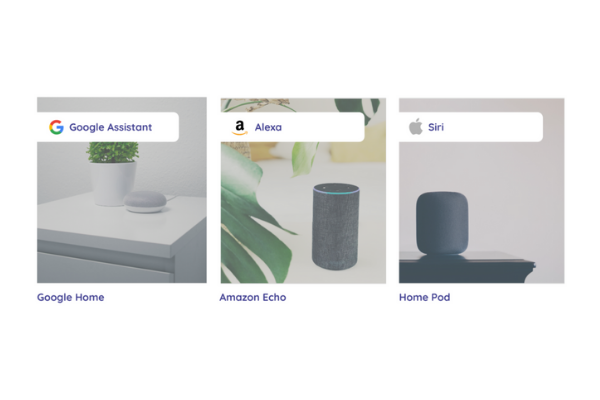
Now that we know what smart speakers are, let’s see what piece of the puzzle is missing for most users of these items to take advantage of their other 80% of potential: home automation.
Why will home automation take your smart speaker to the next level?
The activities that Spaniards do most via smart speakers are listening to music, checking the weather, asking general questions and listening to the news of the day. This is shown in the report “How does your brand sound? State of voice and audio in Spain” by Prodigioso Volcán and the market research institute SEIM.
But what if we told you that you could control your home and reduce more than 30,000 routine tasks just by talking to your smart speaker? This is becoming a reality thanks to the integration of these devices with home automation.
However, only about a quarter of smart speaker users in Spain use them for home automation management in their smart homes or offices, according to the Association for Media Research (AIMC). As we have been able to observe in Kimbo Smart, the main reason why such a low percentage of users integrate their smart speakers with home automation is the lack of knowledge about all the possibilities offered by smart ecosystems and the IoT (Internet of Things).
What possibilities does home automation offer you?
When we use smart speakers to control any room, whether it is our smart home or office, we are opening up a world of greater comfort, greater safety and security and greater energy efficiency and savings.
The integration of home automation and smart speakers means that, with just a word or a command, you can control the lighting in your home, the air conditioning and air quality in your home, all the access controls (doors, windows, etc.) and security systems, all the multimedia devices you want (television, computer, tablet, etc.), the possible sources of domestic incidents (water supply, gas, heaters, sockets, etc.) and the outdoor areas of your home such as the garden or the swimming pool.
Not only that, but you can set up scenes to control several of these areas with a single word or command.
For example, imagine it’s a rainy winter Sunday and all you feel like doing is lying on the sofa with a movie, popcorn and a blanket to spend the afternoon ‘relaxing’. Tell your smart speaker ‘Alexa, movie evening’ and the hardest thing you’ll have to do is choose the movie. Automatically, your living room turns on the TV, activates the sound system and turns up the volume, lowers the blinds and turns off some lights for the best viewing experience. And if you have a popcorn maker or a smart microwave, you can have them activated too, and your house will even make popcorn for you!
